Boris van Berkum’s Divine Winti Inspiration
In Winti, there are no coincidences. And that is exactly why Dutch artist Boris van Berkum became inspired with this Surinamese religion. Winti, you see, takes elements from African and European cultures and mixes them together into an outlook on life that deserves more attention than it does now. I

In Winti, there are no coincidences. And that is exactly why Dutch artist Boris van Berkum became inspired with this Surinamese religion. Winti, you see, takes elements from African and European cultures and mixes them together into an outlook on life that deserves more attention than it does now. It definitely captured Van Berkum, an artistic polyglot and dear friend who is on the cusp of an international breakthrough.
Lees je dit interview liever in het Nederlands? Dan kun je terecht op de website van Kunstuitleen Rotterdam!
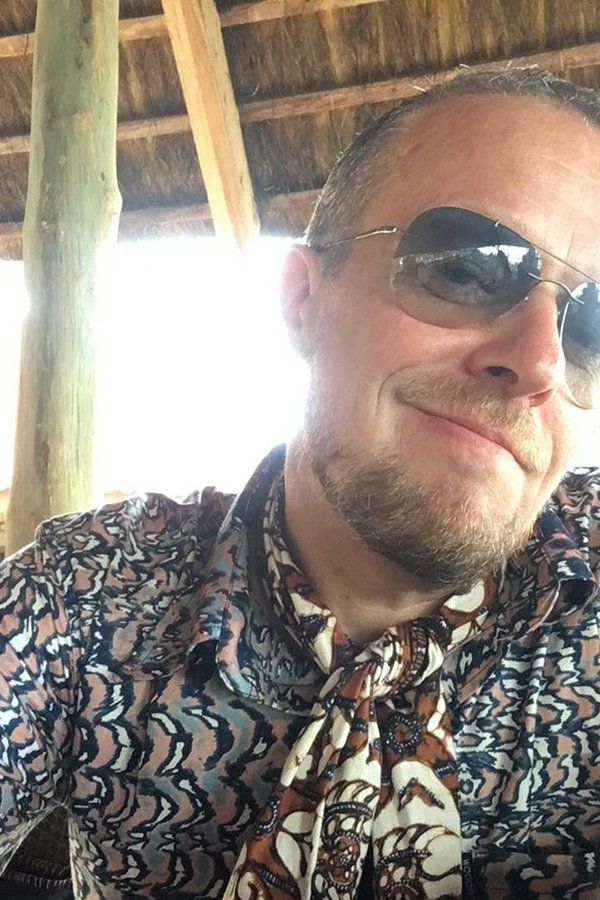

Boris van Berkum as I’ve come to know him – well-spoken and a very snappy dresser! Eyewear by Silhouette.
The last time I saw you, you were working on a larger than life gold-plated statue of a Winti priestess. How is it coming along?
I’m proud to tell you that Mama Aisa is almost ready for production. And that’s not a moment too soon, because the unveiling will be some time next year in Amsterdam-Zuidoost. It will be a spectacular event that will put Surinamese culture on the map in a serious but playful way. Mama Aisa is a combination of three-dimensional scans of the body of Winti priestess Marian Markelo and the head and feet of a nineteenth-century Congolese statue from the Rotterdam Wereldmuseum. Because of its beautiful smile, some people even call it the Mona Lisa of the Africa Collection. Now don’t think that you can just sit down at your desk and design a statue of its size in an afternoon. It took me ages to master Zbrush, a 3d-modelling program that allowed me to get the texture of each fabric just right. The batik that is draped over the chair symbolizes Suriname’s colonial past. For the dress, I used a pattern by Vlisco, the Dutch manufacturer of Africa’s most sought-after fabrics. The print I chose is called Fleurs de Mariage. Most Africans, however, call it Rolls Royce – a name befitting a goddess, don’t you think? Mama Aisa’s scarf was woven by the Ashanti tribe from Ghana. As you can see, Surinamese Winti is a heady, but delicious concoction of several religions, traditions and peoples.
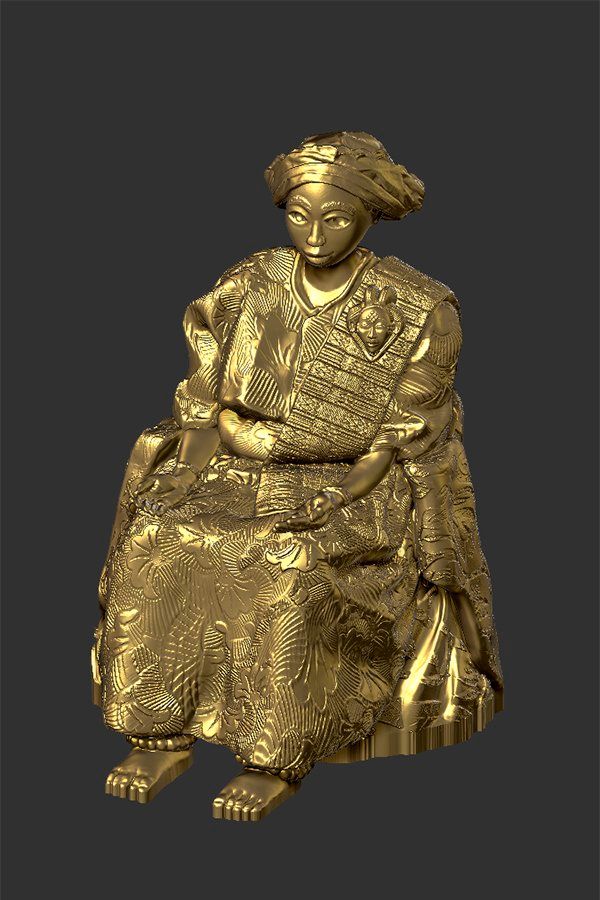
The Mama Aisa statue Boris will unveil in Amsterdam in 2019. Boris assured me there will be commercially produced smaller version later on. Can’t wait!
Is that why find Winti so interesting?
I am a neo artist, which means I am influenced by a wide array of styles and shapes from the world’s art history. Of course, I’m not the first artist who gets inspired by other cultures. Just think of Chinoiserie or our Amsterdam School architecture that was heavily influenced by Indonesia. In any case, I take elements from the past and translate them to art our world needs now. After all, all cultures converge in our modern global society. This is something that we should all celebrate, I think. Artists in particular should embrace this fantastic development.
How did you get in touch with Winti?
Back in 2011, I still had my studio on the island of Brienenoord near Rotterdam. One day, a young Surinamese man asked me if he could the location to organize a three-day Winti festival. The island is very green and situated in a river, two characteristics that some Surinamese people associate with the divine. Of course, I agreed. It was a life-altering experience to witness a Winti-pre dance ritual. People went into a trance, it was unlike anything I had ever seen my hometown. Afterwards, priestess Marian Markelo asked me if she could convince me to make some Winti art. Only later did she tell me why she had asked me off all people. Marian, it turns out, is in contact with her deceased grandmother, her Bigi Sma.
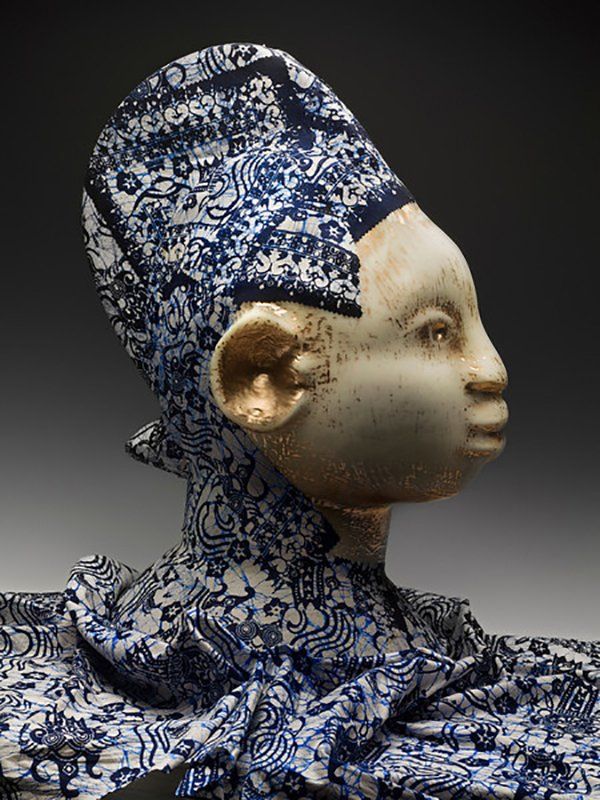
Ancestral Kabra Mask by Boris van Berkum. If you want to find out more, check out this fascinating article.
She is the ancestor who helps Marian on her life path and inspired her during a journey along the infamous Slave River in Ghana. Her grandmother thanked Marian for taking back her ancestors to the place where they bathed one final time before they were shipped as slaves to South America. The time had come to tell the world about Winti. Marian’s grandmother also asked her to bring art to Winti. “If you meet the right artist, I will give you a sign”, she assured her granddaughter. According to Winti, there is no such thing as coincidence. When Marian first shook my hand, she heard her grandmother’s voice whispering. “This is that man.”
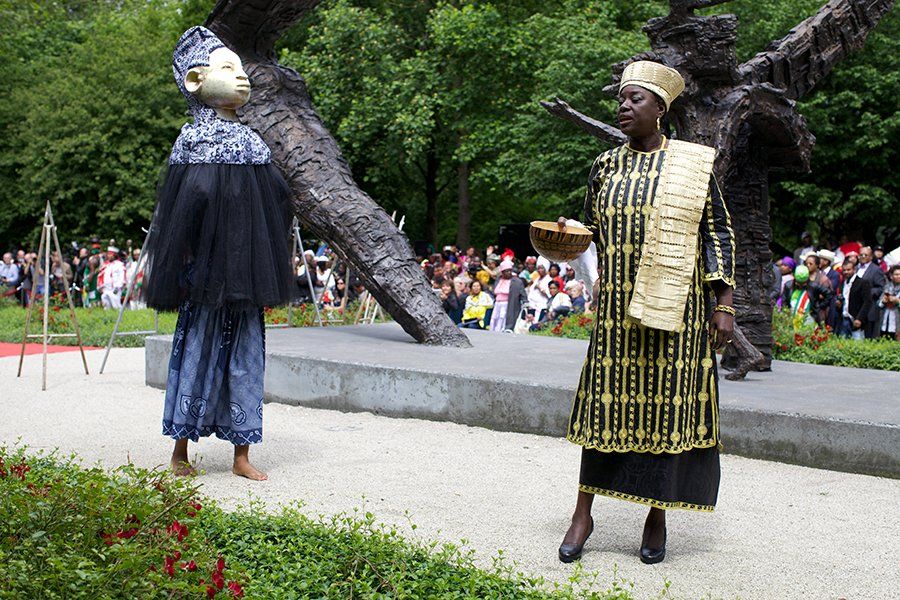
Winti priestess Marian Markelo in a ceremony in front of the Dutch Slavery Monument. On the left you can see the ancestral Kabra mask created for the occasion.
Doesn’t Winti have statues, like many African religions?
Unfortunately, not. The Protestant Dutch threw that element overboard. Now, the moment has come to give back to Winti its masks, statues and altars. That goal motivates me to no end. I have always been a firm believer in magical thinking. It is something we have lost in our modern-day society. Life revolves around money and figures. How happy does that make us in the end? There are concepts in Winti that are truly fascinating, even if you don’t believe in them. In Christianity, the dead should rest in peace. In Winti, on the other hand, your ancestors are always there for you. It is a very comforting thought that you help those who survive you after you die. And let’s not forget the Puru Blaka, a family gathering to mark the ending of a year of mourning the death of a relative. Traditionally, it starts with a ritual called Fio Fio, during which all family members can speak their minds freely. This makes sure that everyone’s intentions are good and pure. Shouldn’t more families perform such a ritual?
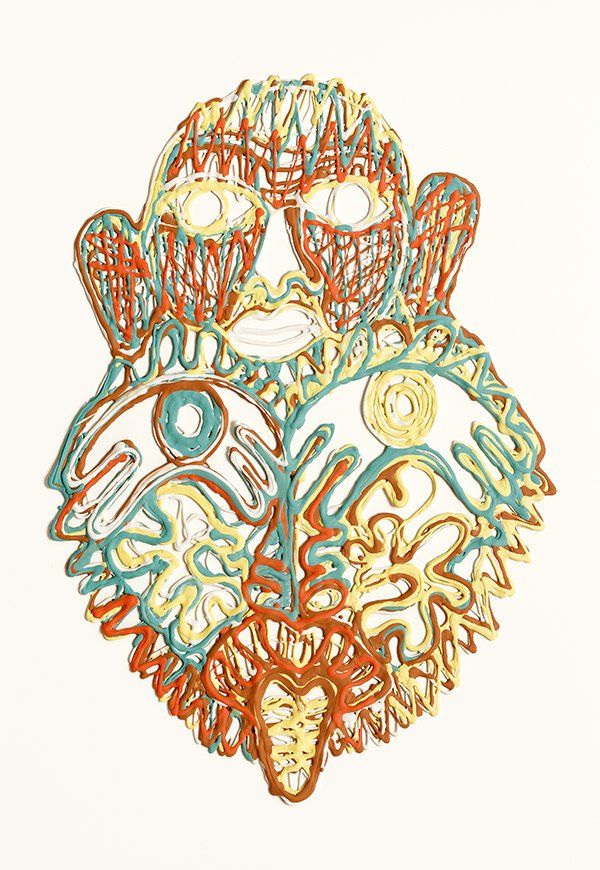
Porcelain Drawing No. 4 is available now at the Rotterdam Art Library
What is the story behind the two works the Rotterdam Art Library has acquired from you?
A while ago, I started drawing with porcelain at the EKWC, the European Ceramics Works Place. Drawing directly on an oven plate using a squirt bottle filled with liquid porcelain leaves no room for mistakes. You can imagine it is a nerve-wracking experience. I practically came out of my mother’s womb with a pencil, so drawing everything just right wasn’t even the biggest challenge. It turned out to be incredibly difficult to find just the right moment to lift the delicate porcelain drawing from the oven plate. After a lot of experimenting, I figured out that all I had to use was a piece of metal wire. It then took the porcelain restorer of the Rijksmuseum to find just the right glue to fixate the drawing to the back of the box frame. Kunstuitleen Rotterdam recently purchased two of my porcelain drawings for their library collection. One is a Nineties acid girl, gnashing her teeth high on ecstasy. The other is a jungle god with a face for a body. I find it interesting to layer separate drawings that together make up a single image. That way, everyone can come up with their own interpretation. I’m not very strict about how my work should be interpreted.
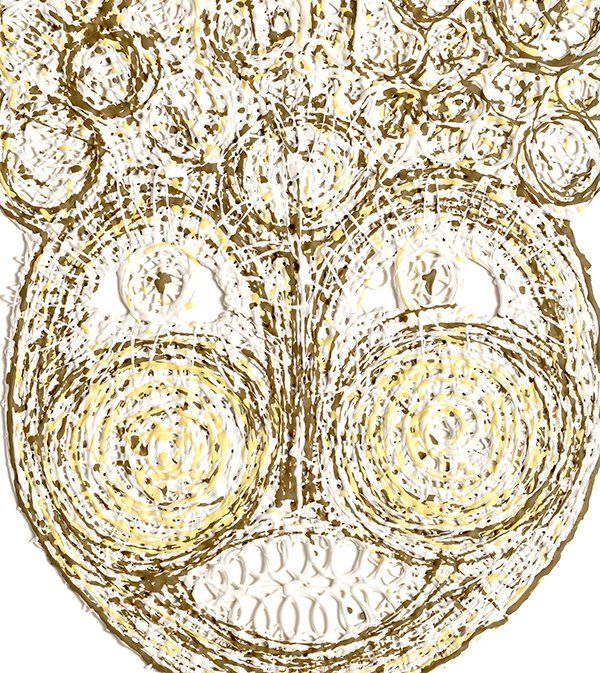
Porcelain Drawing No. 4, a Nineties acid girl gnashing her teeth.
Now that I hear you telling all this, I really regret not being able to make a half-way decent drawing myself.
Drawing is a matter of training your motor skills. When you think of it, it’s nothing more than a series of tiny movements you make with your hand. The more often you draw, the larger your vocabulary will become. During my last visit to Africa, I went to a museum where photography was not allowed. Instead, I just sat down in front each display and started sketching. In retrospect, this worked a lot better than just randomly take photos you instantly forget. Drawing allows you to look with more attention. It is something I can recommend everyone, especially children. I think good drawings will become increasingly rare. We all spend way too much time swiping away on our tablets.
